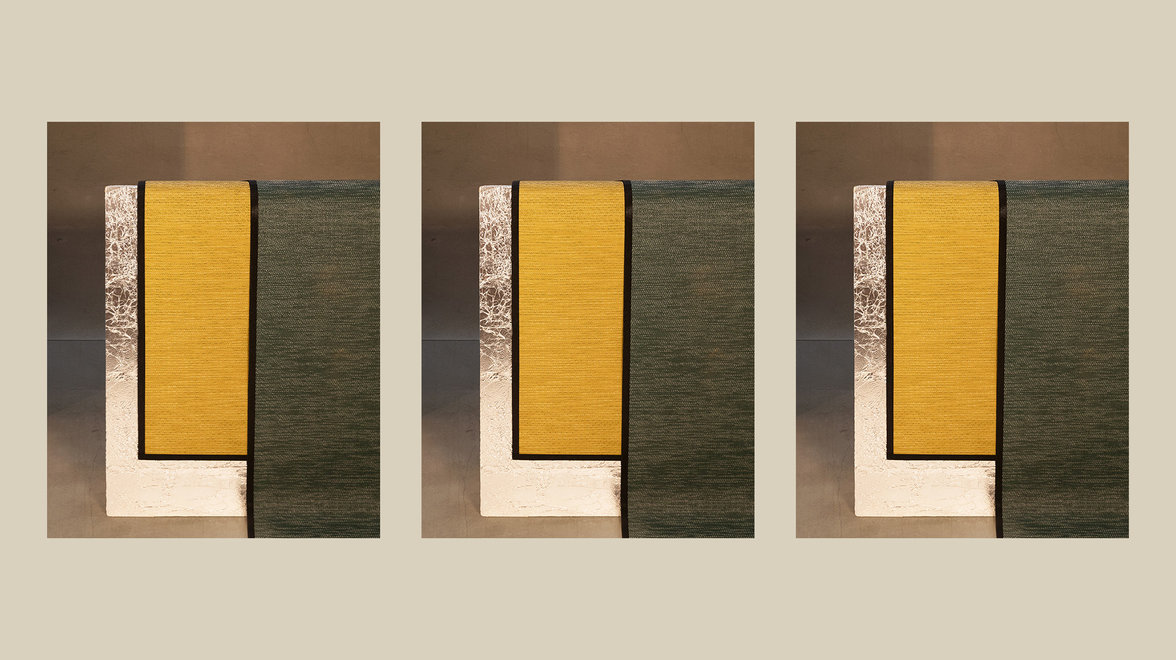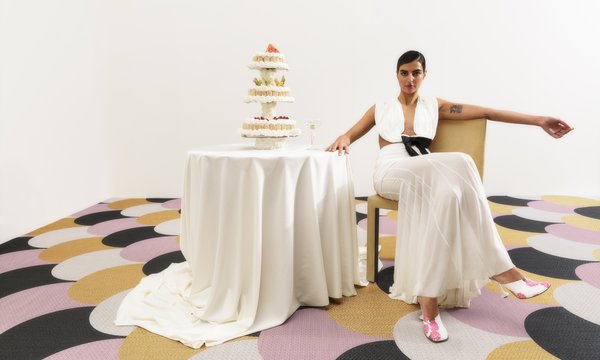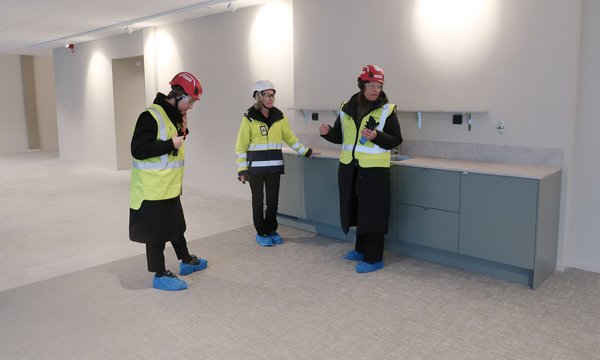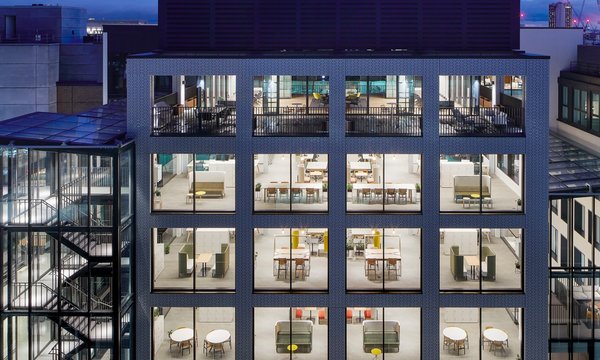Since its inception in the 1950’s, Stockholm Furniture Fair has been a destination for design lovers to experience contemporary Swedish and Scandinavian design. The recent rebranding by Stockholm Design Lab is a visualisation of Swedish heritage and the decades-long know-how of the fair and the agility of the design week. But what does bright yellow and Lars von Trier’s “Dogville” have to do with the Stockholm Furniture Fair?
We spoke to Hanna Nova Beatrice, a long time friend of Bolon and Project Area Manager for SFF. Her many years as a trendsetting editor-in-chief has made her the go-to person for navigating the world of design.
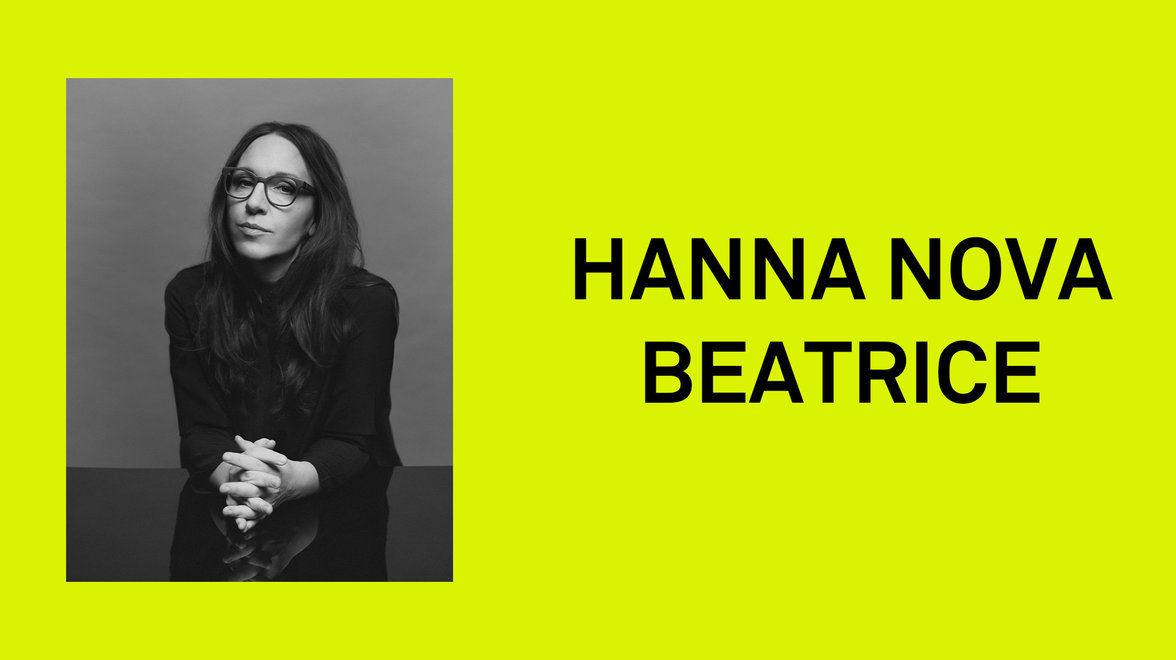
Hanna Nova - what is your favourite colour?
- My children would say black or brown, but that’s because I dress practical. I like calm surroundings with a few selected objects with a strong colour. My latest buy was a small shelf/stool in strong yellow by Marco Campardo which I bought at his exhibition in Milan.
Besides running her own publishing house with the international title The New Era Magazine she dedicates her time to the role as Project Area Manager for Stockholm Furniture Fair and Stockholm Design Week.
- I joined SFF about 1,5 years ago but I had to think about the offer for some time as I hadrecently founded my own publishing house. But at the end of the day I had to say yes. I am very dedicated to the design industry and after the pandemic the Stockholm Furniture Fair was at a crossroads - they really had to reinvent and inject new energy in the brand. Stockholm Furniture Fair has played an instrumental role in promoting and pushing Swedish and Scandinavian design brands since its inception in 1951. It has the heritage and know-how of a traditional fair combined with the agility of the design week we do in the city.
Part of this reinvention was a visual transformation, a task given to Stockholm Design Lab.
- Coming from design media, I felt a need to oversee the graphic identity of SFF and SDW and it felt natural to go to Stockholm Design Lab. We have worked closely with them to find a colour palette representing the heritage and know-how of the fair as well as the agility and energy of the design week. Not many can offer this combination.
- We also wanted to express our location - Sweden - without being too obvious. It was important to unite our different offerings and brands so that the visitor really can feel SFF and SDW both come from us. Early on in the process we also looked at how we could bring exhibitions outside of the fair, or even outside Stockholm Design Week, and easily show it’s made by us. One inspiration was Lars von Trier's “Dogville”. If we could paint a colour or use coloured tape around a space instead of a wall - what could or would express us? We all loved this idea and we will introduce it gradually. The yellow is my absolute favourite.
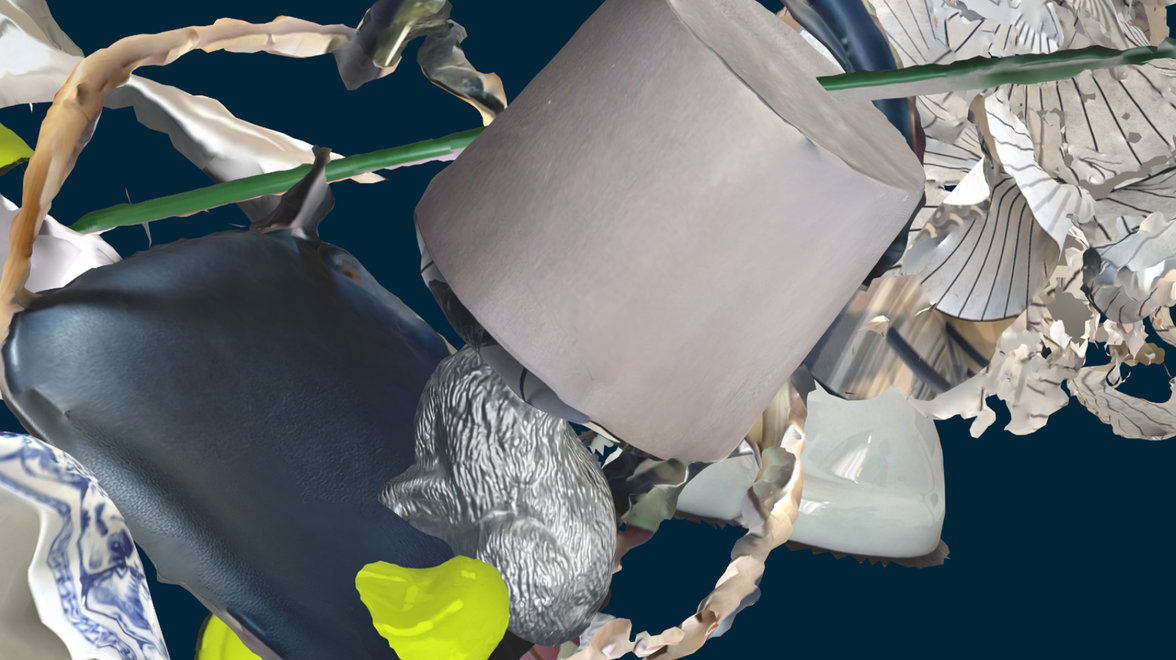
What is the state of Swedish and Scandinavian design?
- We have an amazing amount of great Swedish furniture brands and manufacturers, but branding has never been our best asset. But I do feel a change coming, in general. Not just in Sweden but in Scandinavia. There are many new Scandinavian brands taking centre stage, daring to ask questions, focus on local production and push for a new aesthetics. Vaarnii, Verk, Massproductions and Hem, to name a few. They may be relatively young but they have the intention and a strong voice. We are entering an era where we want individuality.
And on a larger scale, what is the future of fairs?
- We all long to meet. In the midst of the pandemic we didn’t think we ever would feel a need to go to a fair again. But this mindset did change over time. I first started to miss the cultural framing a fair gives to the launch of a product. Then I started to miss seeing products in real life, and then being a part of an industry and a community. A fair has all this - combined with business and growth. A fair is business effective, and if well taken care of, it can also offer discussions and educational exhibitions and exchange. But the fair of the past needs new energy; it needs to be more flexible and offer new agendas, it has to think about sustainable and flexible offers.
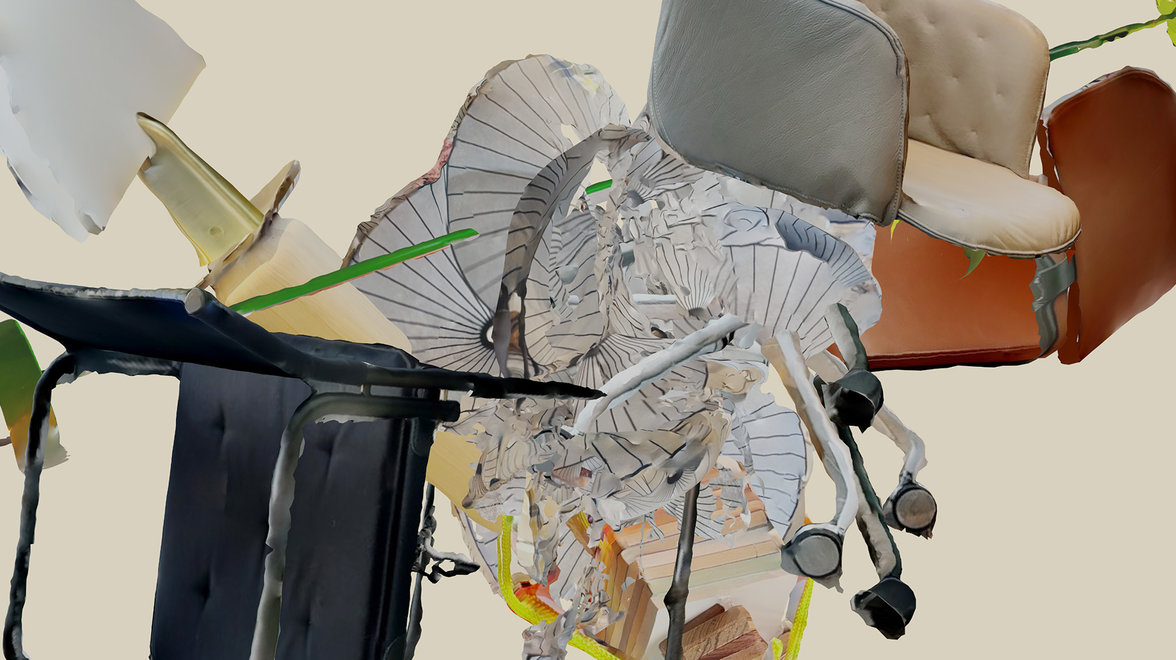
The pandemic turned the world on its head and pushed the design industry to explore new ways. It seems like we are, in some ways, returning to the world before the pandemic. So what should one expect from SFF 2023?
- First and foremost some great exhibitors. We have more than 400 exhibitors and more new brands signed up than in many years. We have more flexible areas such as Nude, with small stands in recycled material, and the gallery, with design launching during design week in the city. The new initiative Älvsjö gård shows more experimental design and really mirrors what we see in the design industry today. It’s the first fair in three years and it’s a very uncertain time in the world, and a rocky market - all these factors will play in. But I am certain we will feel rejuvenated.
